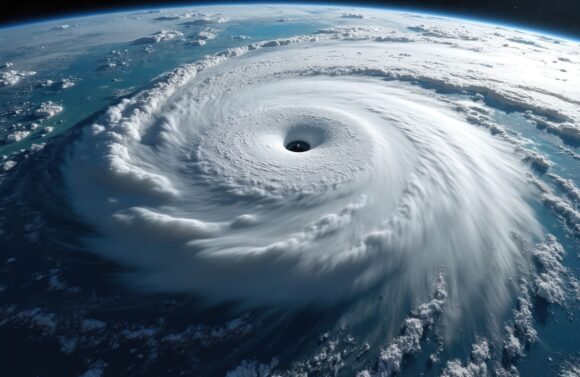September turned out to be a slumber for hurricane watchers.
For the first time in a decade, the month of September produced no hurricane landfalls in the United States. Seven of the previous eight years this occurred, no hurricane made landfall in the U.S. for the entire hurricane season, according to AccuWeather research.
2015 was the last year without a hurricane making landfall in September. That year forecasters had predicted a below or near-average hurricane season, whereas in 2025 most forecasting agencies called for an above-average number of storms.
“Every hurricane season is different. This hurricane season so far is quite unique, with several close calls for the United States,” AccuWeather lead hurricane Expert Alex DaSilva said. “Erin was a major hurricane that stayed 200 miles off the coast of North Carolina in August. The Southeast was spared from major flooding from Hurricane Imelda in September, thanks in part to the rare Fujiwhara Effect. Hurricane Humberto passed within 500 miles of Imelda and helped to pull the smaller storm away from the U.S. coast and out to sea.”
There have been nine named storms to date in the 2025 hurricane season, and forecasters continue to forecast several more named storms to develop. History, however, suggests it’s unlikely that a storm will make landfall in the last weeks of hurricane season, which runs through the end of November.
Since the turn of the century, in the eight years where no hurricane made landfall in the month of September, seven of those hurricane seasons passed without a named storm reaching the U.S. The lone exception was 2002, when Hurricane Lili made landfall in Louisiana on Oct. 3 as a Category 1 hurricane.
“Climatologically speaking, around 75 percent of the hurricane season is past, leaving 25 percent of the hurricane season ahead of us,” DeSilva said. “On Oct. 15, 12-percent remains, on average. By the start of November, only 3% of the hurricane season is left.”
DeSilva cautioned residents to not their guard up.
Warm sea surface temperatures and ocean heat content that is above the historical average in the Atlantic basin could facilitate tropical storms if they were to develop. Disruptive wind shear is also expected to lessen deeper into the year, too.
“We expect atmospheric conditions that could support tropical storms and hurricanes well into late October and November this year.”
October is historically a much quieter month for tropical storm activity than September. Between 1966 and 2024, there were 147 named hurricanes in September compared to just 68 in October, according to NOAA data shared by Weather.com.
Though October has only produced 23 total major hurricanes over the last six decades, the month has seen its share of destructive hurricanes in recent years.
In 2024, Hurricane Milton struck Florida as a Category 3 hurricane on Oct. 9. Insured losses from Milton ranged from $30 billion to $50 billion. And in 2020, Hurricanes Delta and Zeta delivered repeated blows to Louisiana in October, resulting in billions in losses.
“Later in the hurricane season, the areas where tropical storms are more likely to develop include the Southwest Atlantic, as well as the Caribbean Sea,” said AccuWeather chief meteorologist Jonathan Porter added. “Historically, tropical storms can be drawn toward Central America or northward, especially toward the Eastern Gulf, often threatening Florida and other parts of the Southeastern United States. All it takes is one significant tropical storm or hurricane to result in a major disaster.
September may be over, but hurricane-prone states aren’t out of the woods just yet.
Related: Florida Meteorologist Has Predicted One Hurricane for Florida This Year
Topics Catastrophe Natural Disasters USA Hurricane
Was this article valuable?
Here are more articles you may enjoy.



 Trump to Issue Order Creating National AI Rule
Trump to Issue Order Creating National AI Rule  Baldwin Group to Buy CAC Group for About $1B in Cash and Stock
Baldwin Group to Buy CAC Group for About $1B in Cash and Stock  How ‘Super Roofs’ Reward Insurers, Cat Bond Investors and Homeowners
How ‘Super Roofs’ Reward Insurers, Cat Bond Investors and Homeowners  Pierce Named CEO of GEICO as Combs Resigns
Pierce Named CEO of GEICO as Combs Resigns 


